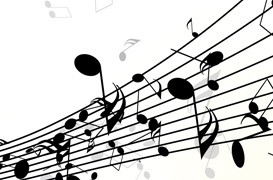Can Music Help People with Epilepsy?

By April Fischione
Do you ever catch yourself staring off into space? In some cases this is considered to be abnormal brain activity called an absence seizure. Epilepsy is a disorder of the brain that causes recurring seizures and affects approximately three million Americans and 65 million people worldwide.
The brain is the most complex organ in the human body and seizures can occur anywhere within it. Children typically experience seizures in the temporal and frontal lobes, while seizures in adults stem from the mesial part of the temporal lobe. There are over 40 different types of epilepsy, but the exact cause is unknown. Some of the most common causes of epilepsy are stroke, brain tumor, head injury, loss of oxygen to the brain, some genetic disorders, some neurological diseases and brain infections.
Epileptic seizures occur from abnormal brain activity and affect multiple systems of the body. During a seizure, the circulatory and respiratory systems can be affected, causing shortness of breath and coughing. The muscular and digestive systems receive messages from the brain causing muscles to contract and relax. While the reproductive system is not affected directly by an epileptic seizure, it can result in high-risk pregnancies, hypertension, underweight babies and stillbirths.
Mozart, Beethoven, Bach, Coltrane
Even though there is currently no cure for epilepsy, it can be treated in several different ways. Depending on what is causing epileptic seizures, a doctor will prescribe different forms of treatment. Among surgery, drugs, diet and vagus nerve stimulation, music is starting to be used as a form of treatment. Because music is processed in the auditory cortex – the same region where most seizures originate – it could prevent seizures.
The American Psychological Association performed an experiment among people with and without epilepsy using an electroencephalogram. In this experiment, each participant’s brainwaves were recorded with 10 minutes of silence followed by a Mozart composition, 10 minutes of silence followed by music by Coltrane, and then just 10 minutes of silence. The study demonstrated that participants had higher levels of brainwave activity when they listened to music. The brainwave activity in the temporal lobe synchronized with the music at higher levels among those participants with epilepsy compared to the participants without epilepsy.
Through the study, researchers concluded music is processed in the brain differently among epileptic patients and may be used as a novel intervention to augment traditional treatments to help treat patients with epilepsy.
Classroom Discussion
- Identify the different structures of the brain and what the function is of each.
- Research the different types of seizures. Are some more common than others? How do the types differ from one another?
- Have some treatments for epilepsy been proven to be more effective than others?
Vocabulary
- Electroencephalogram
- Temporal lobe
- Epilepsy

